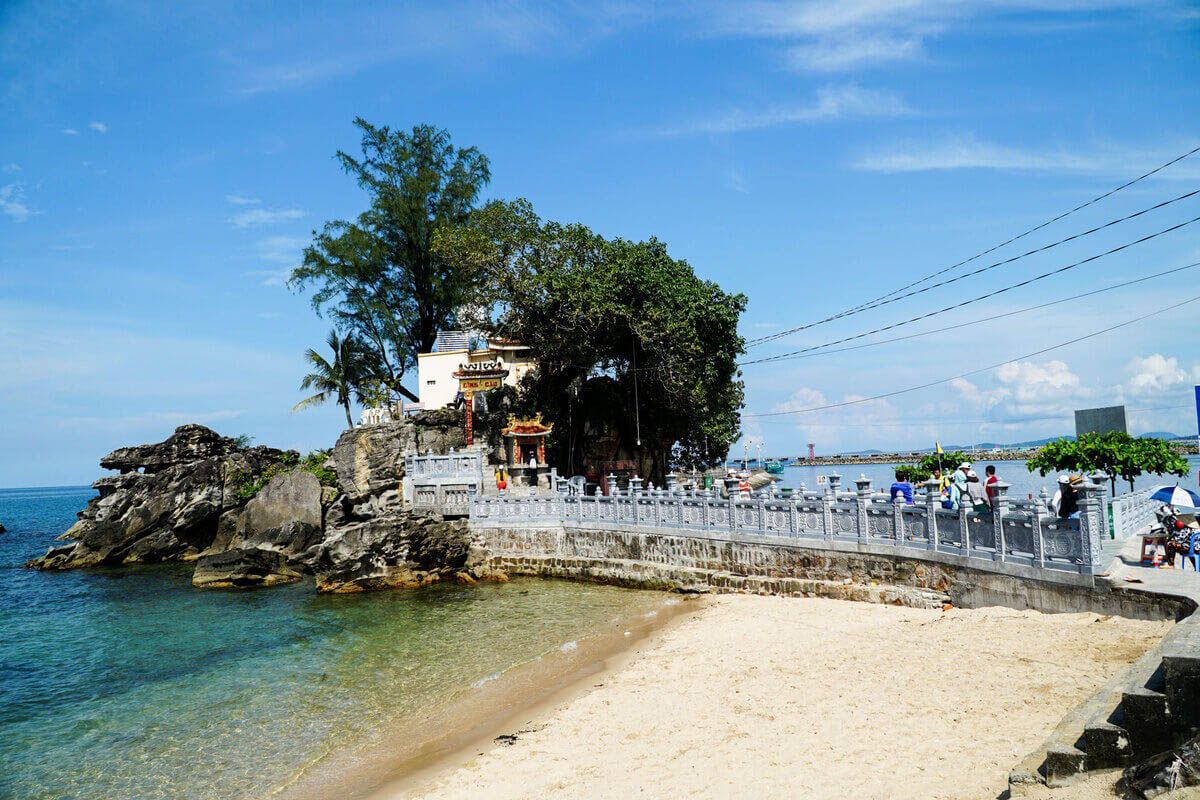Overview of Phu Quoc Prison
-
Location: About 2 km from Bai Khem beach and 28 km south of Duong Dong town
-
Opening hours:
-
Morning: 8:00 – 11:30
-
Afternoon: 13:30 – 17:00
-
-
Best time to visit: November to June, when the weather is cooler and there’s less rain, perfect for outdoor exploration.
-
Duration: 1–2 hours is usually enough to tour the site.
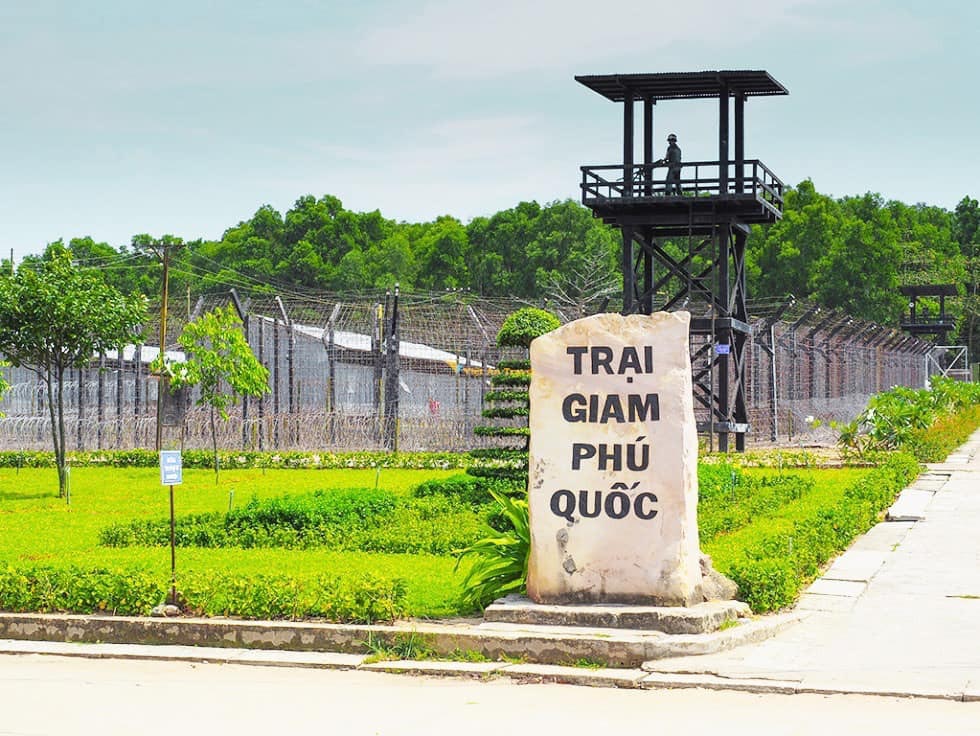
Gate of Phu Quoc Prison
Entry to Phu Quoc Prison is free. If you want a deeper understanding, you can hire a local guide for around 100,000-200,000 VND. Guides share stories that aren’t written on the information boards, adding depth and detail to the experience.
Since this is a solemn historical site, visitors are advised to dress respectfully and avoid overly casual or inappropriate clothing.
The History of Phu Quoc Prison
Built by the French in 1949–1950, and later expanded during the Vietnam War, Phu Quoc Prison once held more than 32,000 prisoners. At its peak, it consisted of nearly 500 barracks across 12 zones, each heavily guarded with watchtowers and surrounded by ten layers of barbed wire.
This was a place of unimaginable suffering. Prisoners endured over 40 methods of torture, from physical beatings to cruel confinement in barbed-wire cages. Yet despite the pain, there were also stories of resilience and incredible escapes that became part of Vietnam’s wartime history.
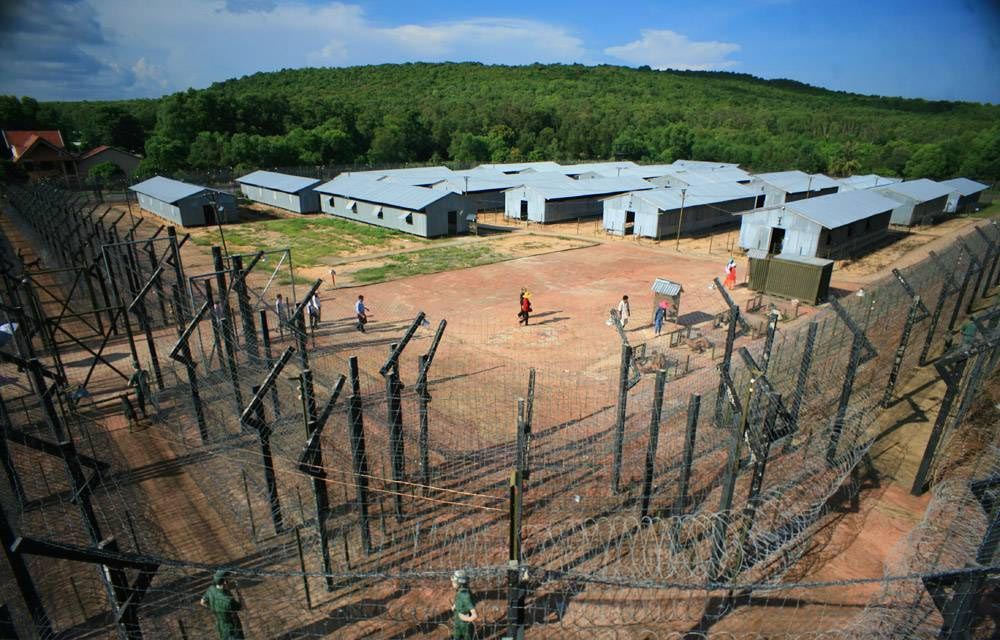
Inside Phu Quoc Prison
Today, much of the prison has been reconstructed for visitors, but some original structures remain, including four of the old detention houses, door frames, and stone foundations.
What to See Inside Phu Quoc Prison
Walking through the complex feels like stepping back into a difficult chapter of history. Some of the highlights include:
B2 Section
Here, life-sized mannequins recreate scenes inside the cells. Visitors can see the cramped conditions and understand the physical and mental struggles endured by prisoners.
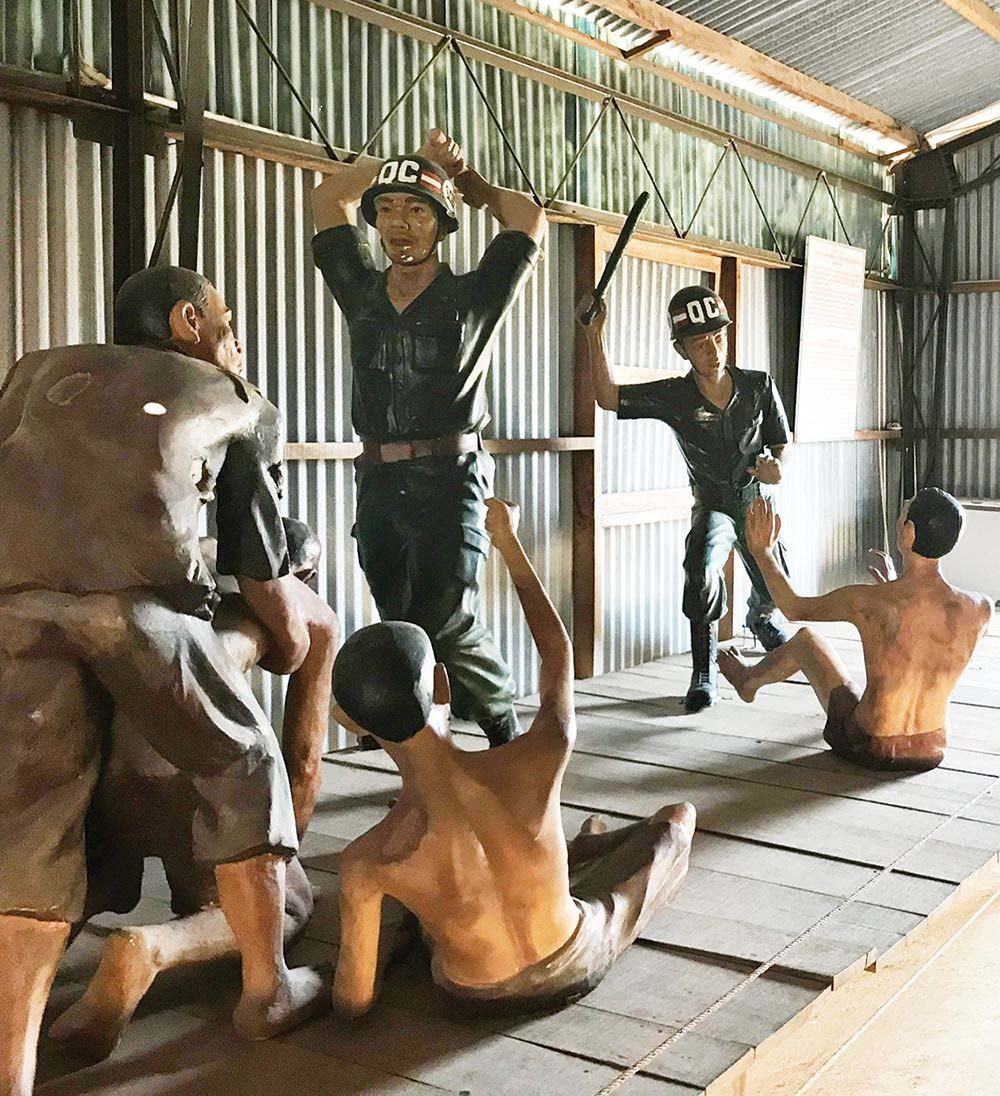
B2 Section
The Tiger Cages
One of the most haunting parts of Phu Quoc Prison, these cages were only 2 meters long and 0.5 meters wide, surrounded by barbed wire. Prisoners could barely move, making this one of the harshest torture methods of the time.
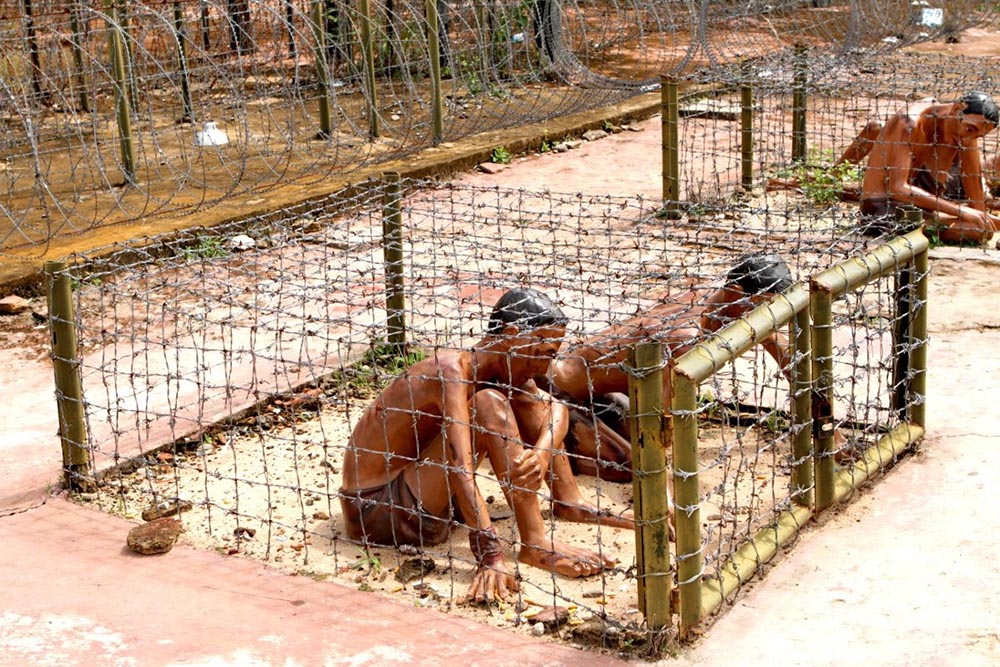
The Tiger Cages
Solitary Confinement Room
This area illustrates both the punishments and the resilience of prisoners. You’ll also see reconstructions of tunnels that were secretly dug as part of daring escape attempts.
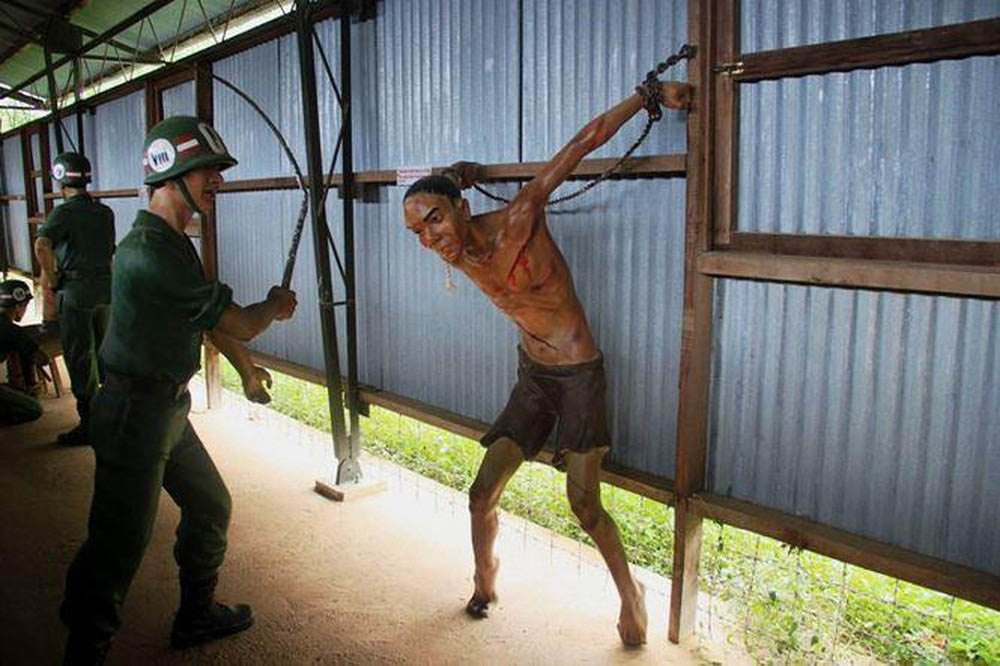
Solitary Confinement Room
Exhibition Hall
Photographs, documents, and artifacts from the wartime era are displayed, offering deeper insight into what life was like behind the prison’s walls.
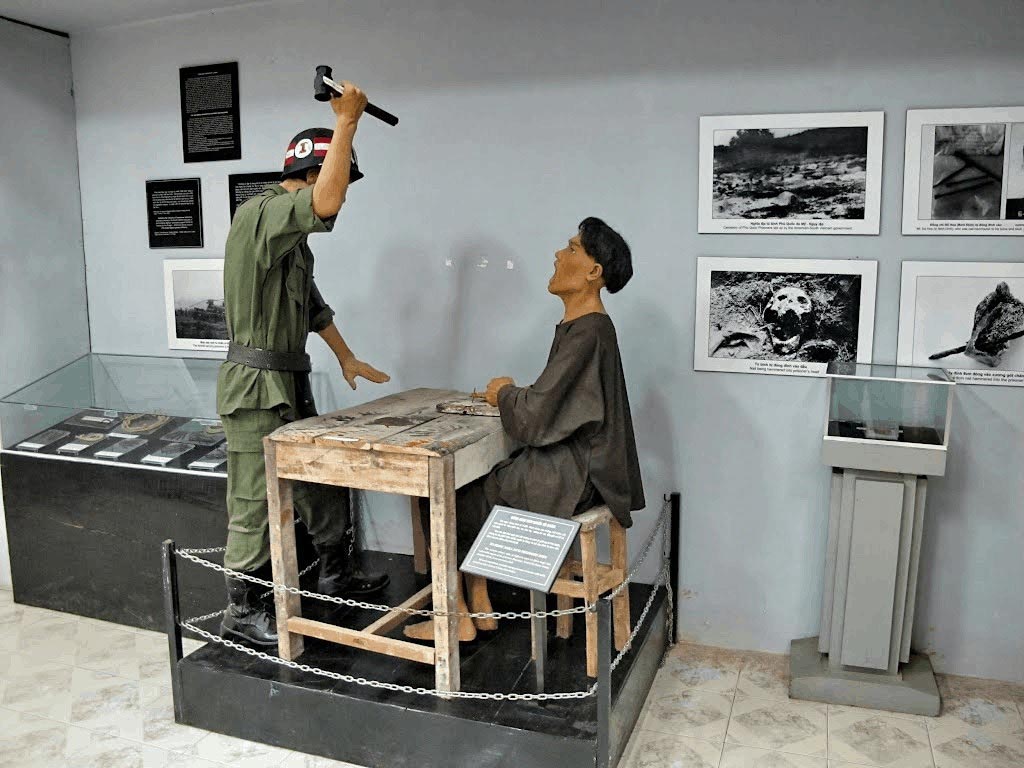
Exhibition Hall
Travel Tips
-
Visit in the morning or late afternoon for cooler weather.
-
Take your time walking through each section; the details are easy to miss.
-
If possible, hire a guide to hear stories that bring the site to life.
-
Combine your visit with nearby attractions like Bai Khem or Bai Sao for a full day exploring the southern part of the island.
Phu Quoc Prison serves as a reminder of the hardships endured during the war and the strength of those who fought for freedom. A visit here will not only enrich your understanding of the island but also leave you with a deeper respect for Vietnam’s history.
Book your Vietnam tour with New Asia Tours today and experience Phu Quoc in a way you’ll never forget.




